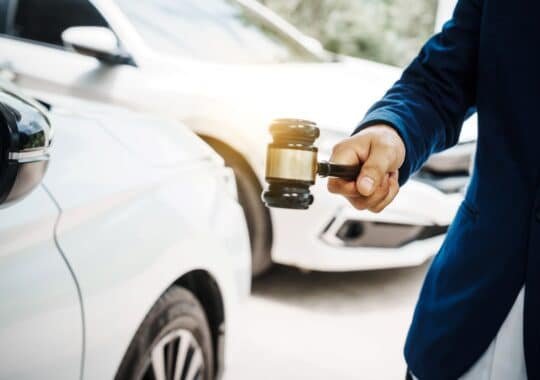|
Getting your Trinity Audio player ready...
|
Orlando draws millions of visitors each year to its theme parks and attractions. What many residents don’t realize is that their own homes might contain treasures worth far more than a day at the parks. Old coins sitting in drawers, inherited from family members, or discovered during moves can hold surprising value.
Understanding coin values helps you make informed decisions about family heirlooms and collections. The coin market has specific factors that determine what a piece is worth. Knowing these basics protects you from selling too low or holding onto items that should be liquidated now.
Many Orlando families work with professional coin buyers to assess their collections. Orlando Coin Buyers and similar services offer free evaluations that help homeowners understand what they own. Getting multiple opinions makes sense for any collection worth evaluating.

How Coins Gain Value Over Time
Three main factors affect what a coin is worth: rarity, condition, and demand. A coin doesn’t need all three to have value, but the best pieces score high in each category.
Rarity comes from limited mintage numbers. The U.S. Mint produces billions of coins each year, but certain years and mint marks saw much smaller production runs. The 1909-S VDB Lincoln cent had only 484,000 pieces made, compared to over 72 million regular 1909 cents. This scarcity drives prices higher when collectors compete for examples.
Condition determines how much a rare coin actually sells for. Collectors use the Sheldon Scale, which runs from 1 to 70, to grade coins. A coin graded MS-65 (Mint State) can be worth hundreds of times more than the same coin in Good-4 condition. Professional grading services like PCGS and NGC authenticate and grade coins, sealing them in protective holders with the grade printed on the label.
Demand fluctuates based on collecting trends and precious metal prices. Morgan silver dollars from the 1880s and 1890s remain consistently popular. Meanwhile, coins containing gold or silver track commodity prices. When silver prices jumped from $12 to $30 per ounce between 2019 and 2021, silver coins increased in value regardless of their numismatic (collector) appeal.
Common Valuable Coins Found in Florida Homes
Certain coins appear frequently in estates and old collections. These pieces are worth checking for when you sort through inherited items or childhood collections.
Pre-1965 dimes, quarters, and half dollars contain 90% silver. A pre-1965 quarter contains about 0.18 troy ounces of silver, worth roughly $4.50 at $25 per ounce silver prices. People often find rolls or bags of these coins tucked away in closets or safety deposit boxes.
Indian Head cents (minted 1859-1909) and Buffalo nickels (1913-1938) attract collector interest. Most circulated examples sell for $1 to $5, but certain dates command premiums. The 1877 Indian Head cent, for example, regularly sells for $1,000 or more even in worn condition.
Mercury dimes (1916-1945) and Standing Liberty quarters (1916-1930) combine silver content with collector appeal. The 1916-D Mercury dime, with only 264,000 minted, sells for $1,000+ in average condition. Standing Liberty quarters before 1925 show dates that wear away quickly, making readable dates more desirable.
Morgan and Peace silver dollars remain favorites among collectors. These large silver coins, minted from 1878-1935, feel substantial in your hand. Common dates in average condition sell for $30-$40, but rare dates and mint marks push values into thousands. The 1889-CC Morgan dollar, struck at the Carson City mint, lists at over $5,000 in circulated grades.
Gold coins represent the highest value discoveries. Even common $10 and $20 gold pieces contain nearly half an ounce or a full ounce of gold respectively. At $2,000 per ounce, these coins are worth $800 to $1,800 just for metal content, before any numismatic premium.
Where Old Coins Hide in Your Home
Estates often contain coins in unexpected places. Checking these spots before disposing of belongings can prevent accidentally discarding value.
Safety deposit boxes hold concentrations of coins because people stored them intentionally. When settling estates, families should examine all bank boxes before closing accounts. Many discover collections their relatives never mentioned.
Dresser drawers and jewelry boxes often contain old coins mixed with costume jewelry. Grandparents who lived through the Depression sometimes saved silver coins, viewing them as more “real” than paper money. These coins get passed down without much fanfare.
Old purses and wallets tucked in closets can contain coins from decades ago. Women especially collected coins in small purses they later stored away. These forgotten accessories sometimes hold pre-1965 silver coins or wheat cents.
Basements and attics store boxes from moves, inheritances, and childhood items. Coin collections assembled as school projects or hobbies often end up in storage. These collections might have increased considerably in value since they were put away.
Books serve as hiding spots too. People used coins as bookmarks or pressed them between pages. Check old books before donating them to libraries or selling them at yard sales.
Red Flags: Coins That Aren’t Worth Much
Not every old coin has value beyond face value. Learning which coins to skip saves time during evaluation.
Wheat pennies from 1940-1958 are common. Billions were minted during and after World War II. Unless you find specific rare dates like 1943 copper (an error) or 1955 doubled die, most wheat cents sell for 3-5 cents each in bulk.
Jefferson nickels from 1946 onward contain no silver and have minimal collector value. The 1942-1945 “war nickels” do contain 35% silver and are worth checking. You can identify them by the large mint mark above Monticello on the back.
Modern commemorative coins from the 1980s onward were mass-produced. The U.S. Mint sells these directly to collectors at premiums above face value. While they might have some value over time, most sell below original purchase price on the secondary market.
State quarters from the 1999-2008 program are still common. Millions of people saved complete sets, which means supply exceeds demand. Unless you find error coins or rare varieties, state quarters are worth 25 cents each.
Foreign coins often have minimal resale value unless they’re gold or silver. Most countries’ base metal coins from the past 50 years have little collector interest outside their nation of origin. Dealers often decline to purchase them.
Getting Coins Evaluated Properly
Professional evaluation protects you from both underselling and overestimating your coins’ worth. Here’s how to approach the appraisal process.
Start by sorting coins by type and date. Group all pennies together, all nickels together, and so on. Within each type, arrange them by date. This organization helps appraisers work faster and makes you more knowledgeable about what you own.
Never clean coins before evaluation. Cleaning reduces value, often dramatically. Collectors prefer natural toning and patina. Even gentle cleaning with soap or jewelry cleaners can cut a coin’s value in half. Leave them exactly as you find them.
Take clear photographs of notable coins before bringing them in for evaluation. If something happens during transport, you’ll have documentation of condition. Photos also help if you’re comparing offers from multiple buyers.
Get multiple opinions on valuable collections. While reputable dealers give fair offers, markets vary and specializations differ. One dealer might specialize in gold coins while another focuses on rare dates. Getting three opinions gives you a realistic value range.
Ask how the buyer determines grades and values. Professional buyers should explain their reasoning and show you comparable sales data. Services like PCGS CoinFacts and NGC Price Guide publish retail values and auction records. Buyers typically offer 70-90% of retail for coins they’ll resell, or spot price minus a small percentage for bullion coins they’ll melt.
Consider professional grading for potentially high-value pieces. Sending coins to PCGS or NGC costs $20-$100 per coin depending on service level and value. This expense makes sense for coins potentially worth $500+. Third-party grading provides authentication and can increase what buyers pay.
Precious Metal Content Matters
Many old coins are worth more melted than they are to collectors. Understanding metal content helps you establish minimum values.
Pre-1965 U.S. dimes, quarters, and half dollars contain 90% silver. A $1 face value of these coins (4 quarters, 10 dimes, or 2 half dollars) contains approximately 0.715 troy ounces of pure silver. At current prices around $25 per ounce, that dollar face value is worth about $18 in silver content alone.
War nickels from 1942-1945 contain 35% silver. Each weighs 5 grams total, yielding about 0.056 troy ounces of silver per coin. At $25 per ounce, each war nickel contains roughly $1.40 in silver.
U.S. gold coins contain 90% gold. A $20 Saint-Gaudens or Liberty double eagle contains 0.9675 troy ounces of gold. At $2,000 per ounce, that’s nearly $1,935 in gold content before any numismatic premium. Even damaged gold coins sell for near their metal value.
Half cents and large cents from before 1857 contain copper. While copper prices are low, some earlier dates have collector value. The metal content establishes a floor price of a few dollars for most pieces.
Nickel five-cent pieces from 1866-1942 and 1946-present are 75% copper and 25% nickel. Base metal values are low, so these coins need collector demand to be worth more than face value.
Inheritance and Estate Planning Considerations
Coin collections require different handling than other assets when settling estates. Planning ahead prevents losses.
Document collections before death when possible. Creating an inventory with photos and approximate values helps heirs make informed decisions. This documentation proves ownership and aids insurance claims if needed.
Understand that probate can delay sales. If coins are part of an estate going through probate, heirs may need court approval to sell. This process can take months or years. Planning sales around probate timelines prevents forced liquidation at bad prices.
Be aware of capital gains implications. If someone inherits coins worth significantly more than when purchased, selling them creates taxable gains. The cost basis steps up to fair market value at death, but accurate valuations at time of inheritance matter for tax purposes.
Consider dividing collections among heirs based on interest and knowledge. One heir might appreciate numismatics while another just wants cash. Splitting collections intelligently respects both preferences. Professional appraisers can divide collections into equal-value lots if multiple heirs want coins.
Get appraisals from certified numismatists for estate tax purposes. Large collections may require professional valuation for IRS reporting. The American Numismatic Association maintains a list of appraisers qualified to provide estate valuations.
Market Timing and When to Sell
Markets for coins fluctuate based on precious metal prices and collector demand. Timing your sale can affect what you receive.
Silver and gold prices move with inflation concerns, currency values, and industrial demand. When inflation fears rise, precious metals typically increase in price. This lifts values for all silver and gold coins, even common dates. Tracking metal prices through sites like Kitco.com or Bullion Vault helps you understand current markets.
Numismatic values follow different patterns. Rare coin prices tend to rise steadily over decades, with occasional corrections. Major auctions often set new price records that affect how dealers value similar pieces. Economic recessions can depress rare coin prices as collectors redirect funds to living expenses.
Tax time creates selling pressure. Many people liquidate assets in January and February to cover tax bills. This seasonal increase in supply can slightly depress prices. Late summer and fall often see stronger prices as dealers stock up for holiday buyers.
Large collections sell better in pieces than all at once. Flooding the market with hundreds of coins of the same type pushes prices down. Selling in smaller lots over time can yield better total returns, though it requires more effort.
Consider long-term capital gains rates if you’ve held coins over a year. Coins classify as collectibles under U.S. tax code, with a maximum 28% tax rate on gains rather than the 15-20% rate for stocks. Holding for longer doesn’t reduce this rate, so selling sooner rather than later doesn’t create tax disadvantages for collectibles.
Protecting Your Collection While Deciding
Once you know coins have value, proper storage prevents loss or damage before sale.
Store coins in a cool, dry location. Heat and humidity cause corrosion and toning that can reduce value. Climate-controlled spaces work best. Avoid attics, garages, and outdoor sheds where temperature swings are common.
Use proper holders. Cardboard 2×2 holders with mylar windows work well for individual coins. Hard plastic holders provide more protection but cost more. Avoid holders with PVC, which releases chemicals that damage coins over time. If existing holders feel soft or sticky, replace them immediately.
Keep silver coins away from rubber and sulfur-containing materials. Rubber bands, for example, cause black spots on silver. Store coins separately from keys, paper clips, and other metal objects that might scratch surfaces.
Get adequate insurance coverage. Homeowners insurance typically limits coverage for coins to $1,000-$2,000 total. Riders or separate collectibles policies cover higher values. Document collections with photos and appraisals to support claims.
Don’t discuss valuable collections publicly. Social media posts about coin finds can attract theft. Keep discoveries private until you’ve secured the coins and made selling decisions.
Use safety deposit boxes for the most valuable pieces. Banks offer secure storage for small monthly fees. This protection makes sense for coins worth thousands or more, especially during estate settlement when homes may sit empty.
Questions to Ask Potential Buyers
Whether selling to dealers, auction houses, or collectors, asking the right questions protects your interests.
Ask about the buyer’s licensing and credentials. Many states require precious metals dealers to be licensed. Memberships in organizations like the Professional Numismatists Guild or American Numismatic Association indicate established businesses.
Request explanation of their offer. Good buyers explain how they determined values and what factors affect their offer. They should reference price guides or recent auction results. Vague answers or pressure to sell immediately are red flags.
Understand their payment methods and timing. Most dealers pay immediately with cash, check, or bank transfer. Auction houses take longer, often 30-45 days after sale. Consignment arrangements might delay payment until items sell.
Find out about return policies or guarantees. While most sales are final, reputable buyers stand behind their authenticity guarantees. If they later discover a coin is counterfeit, they should refund your payment.
Ask about bulk discounts or premiums. Some buyers pay more per ounce for larger quantities of silver or gold coins because processing costs spread across more value. Others might pay less for extremely large lots.
Clarify whether offers are for individual pieces or lot totals. When selling mixed collections, ensure you understand which coins drive value and which are being purchased at melt or minimal premiums.
Turning Knowledge Into Action
Finding old coins in your home can be exciting, but value only matters when you convert it to cash or make informed decisions to hold pieces that might appreciate further.
Start by gathering everything coin-related in your home. Check all the hiding spots mentioned earlier. Sort what you find by type and date. This initial organization takes a few hours but provides clarity on what you own.
Research obvious valuable pieces online first. Sites like PCGS CoinFacts show images and values for most U.S. coins. This preliminary research helps you identify which coins warrant professional evaluation and which are common.
Reach out to local coin dealers for free verbal evaluations. Most dealers gladly look at collections without obligation. This costs you nothing and provides market-based opinions. Be skeptical of anyone who offers to buy immediately without proper examination.
For collections worth $5,000+, consider auction houses. Heritage Auctions, Stack’s Bowers, and Great Collections handle coins on consignment. They take 10-20% commissions but often achieve higher prices than dealer purchases because they reach thousands of collectors.
Trust your instincts. If an offer feels too low or a buyer seems pushy, walk away. Legitimate buyers know good deals take time and respect sellers who do their homework.
The coins in your possession tell stories of American history and economics. Whether you sell them now or pass them to the next generation, understanding their value helps you make choices that honor their significance and your family’s legacy.



